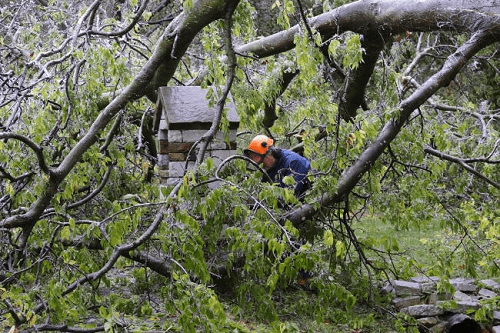
10.2.21 – The Oklahoman – Jack Money
Looks like the Polar Express will roll across Oklahoma again this winter.
So says this year’s 230th edition of the Farmer’s Almanac, which forecasts Oklahomans and Texans will see colder than normal conditions in November, December and January.
Like every other year, the 2021 version of the almanac bases its long-range weather forecasts on predicted rates of solar activity, water temperatures in the Pacific and Atlantic Oceans and changes in polar atmospheric pressures in the northern Atlantic that affect the jet stream (and the resulting storm tracks) in the northern hemisphere.
Generally, it relies upon solar science, climatology and meteorology to offer up predictions that are accurate about 80% of the time.
Its colder and dryer than average outlook for Oklahoma this winter isn’t too different from what forecasters from the National Weather Service’s Climate Prediction Center also indicate we can expect.
What else you might find in the almanac
This year’s edition includes information about astrology, astronomy, calendar-based observances, tidal data, folklore, food, gardening, genealogy, history and other interesting tidbits that make it a fun read.
Plus, weather history is an awesome teacher, said Alex Zwink, a meteorologist at the National Weather Service office in Norman.
Before computers became such a predominant feature of today’s weather forecasts, people relied upon past observations as they watched clouds and developing systems to determine when the weather was about to turn ugly, he said.
“You can find a lot of people in their 70s and 80s who have watched weather constantly, and they have a good handle … they document trends, a lot like the Farmer’s Almanac does, and they are right a lot of times,” Zwink said.
Not a replacement for modern meteorology
But even the most observant, everyday Oklahoman couldn’t have foreseen historic events like the crippling ice storm that struck central Oklahoma in late October before trees even began to lose their leaves, or the February deep freeze that briefly interrupted power for Oklahomans and crippled power delivery south of the Red River, creating conditions that killed dozens of Texans.
Zwink recommends people continue to rely on regularly updated forecasts to stay up with those types of events.
“You get people who swear by the almanac and others who say it is a book of lies,” he said. “But it always is interesting to compare old school thinking with today’s meteorology.”
As for the Climate Prediction Center, it has put the south-central region of the Lower 48 under a La Niña watch for this winter because it expects water in the Pacific Ocean off the West Coast to be cool enough this winter to set up a dominant dome of high pressure over the northern Pacific Ocean.
That atmospheric condition usually forces jet stream-carried weather systems up across Alaska before allowing them to dive south across Canada and the Great Plains deep into the Lower 48.
This winter’s outlook is similar to one issued by the center for our part of the nation last year, Zwink said.
“But one of those things we have to remember is that Oklahoma does Oklahoman things to our weather, so be prepared for anything,” Zwink said.
